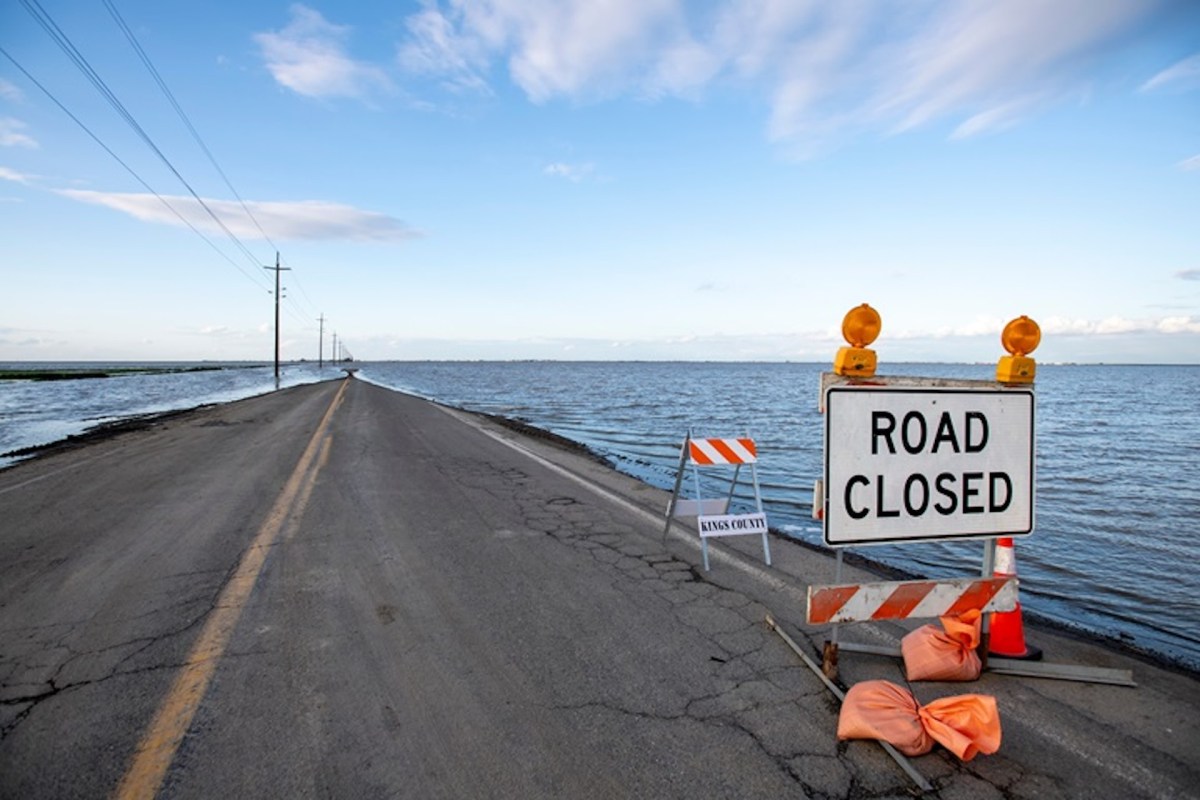A historically and culturally significant lake in California's San Joaquin Valley that first disappeared in 1898 has returned after last year's atmospheric rivers flooded the region.
Tulare Lake, known as Pa'ashi — or "big water" — to the local Tachi Yokut Tribe, was "once the largest body of freshwater west of the Mississippi River," per Earth.com.
Vivian Underhill, who published a paper on Tulare Lake as a postdoctoral research fellow at Northeastern University, noted it was mostly sustained by snowmelt from the Sierra Nevada mountains and was 100 miles long and 30 miles wide at its peak.
The lake served as a key resource for Indigenous Peoples and wildlife and was once robust enough to allow steamships to transport agricultural goods throughout the state.
However, government officials persecuted and displaced the indigenous communities in the late 1800s to convert the area for farming through draining and irrigation.
"They really wanted to get [land] into private hands so that indigenous land claims — that were ongoing at that time — would be rendered moot by the time they went through the courts," Underhill told the Northeastern Global News. "It was a deeply settler colonial project."
While Pa'ashi periodically reappeared during the 1930s, '60s, and '80s, the barrage of atmospheric rivers California experienced in 2023 revived the lake despite the region receiving just 4 inches of rain annually. According to Underhill, Tulare Lake is now the same size as Lake Tahoe, which is 22 miles long and 12 miles wide.
Its resurgence has led to the return of humid breezes at least 10 degrees cooler than average and native species, including fish, amphibians, and birds. Lake Tulare was once a stopping point for migratory birds traveling a route known as the Pacific Flyway.
"Something that continues to amaze me is — [the birds] know how to find the lake again," Underhill told the Northeastern Global News. "It's like they're always looking for it."
The Tachi Yokuts have also returned to Pa'ashi's shores, once again practicing their ceremonies and planting tule reeds and native sage.
"I could get in trouble," Carlos Garcia Jr., a cultural liaison for the Tachi Yokuts, told Underhill about resuming their traditions. "But I'm willing to risk that to practice my ways and to honor the lake and be able to say that I did that."
However, Underhill acknowledged the complexity of the lake's rejuvenation, as the floods have caused millions of dollars of damage to crops, farm equipment, and homes. Efforts are already underway to drain the lake, but Underhill and other biologists believe Pa'ashi should remain.
"Recognizing Pa'ashi as central to this landscape's ecosystem would remake mainstream senses of the valley: no longer the productive agricultural region that feeds the nation (at a steep premium)," she stated. "Letting Pa'ashi remain could heal the Central Valley's relationship with water, serving as water storage, flood protection, and a profound new turn in ecological restoration."
"I love the fact that it came back for us. I love the fact that it took over the land that was taken from us. I love the fact that it's resilient and it still keeps returning, even through the destruction, that they tried to take it away," Kenny Barrios, another cultural liaison for the tribe, said. "The lake is just like us."
Join our free newsletter for cool news and cool tips that make it easy to help yourself while helping the planet.









